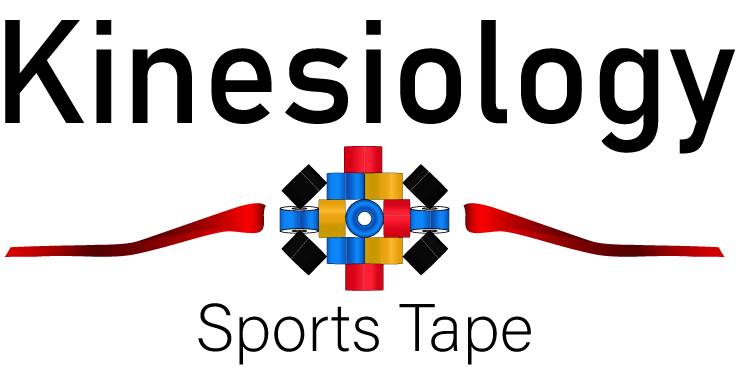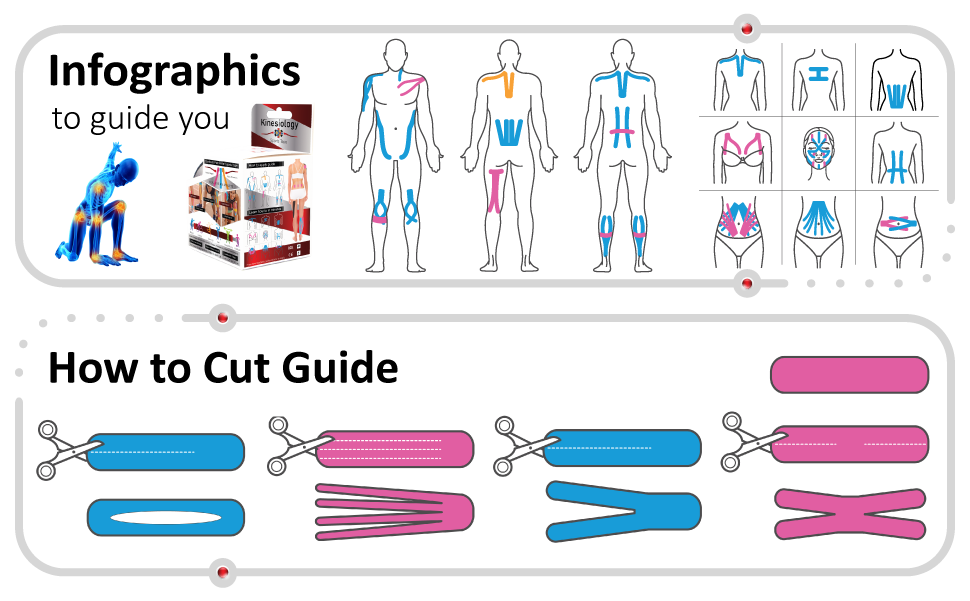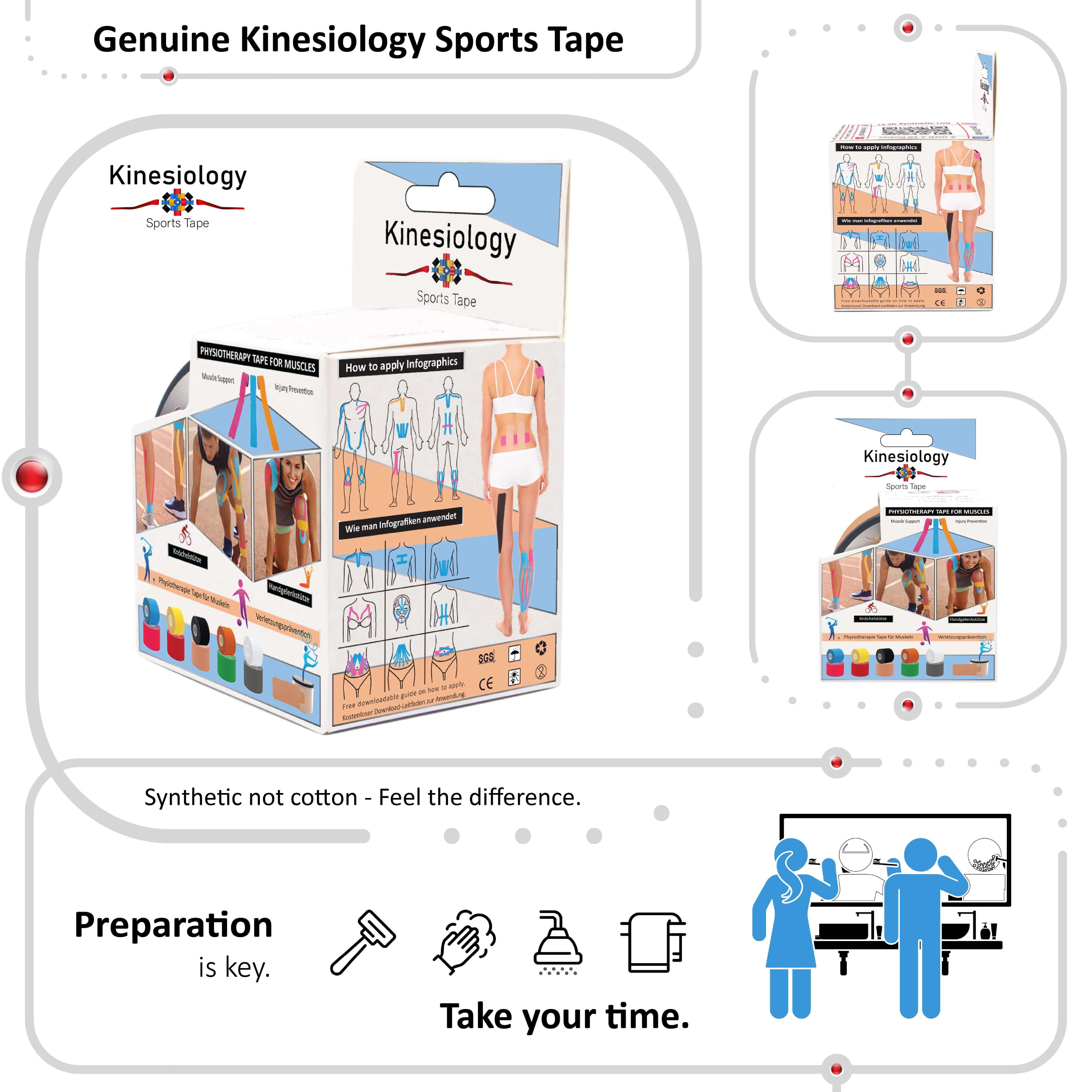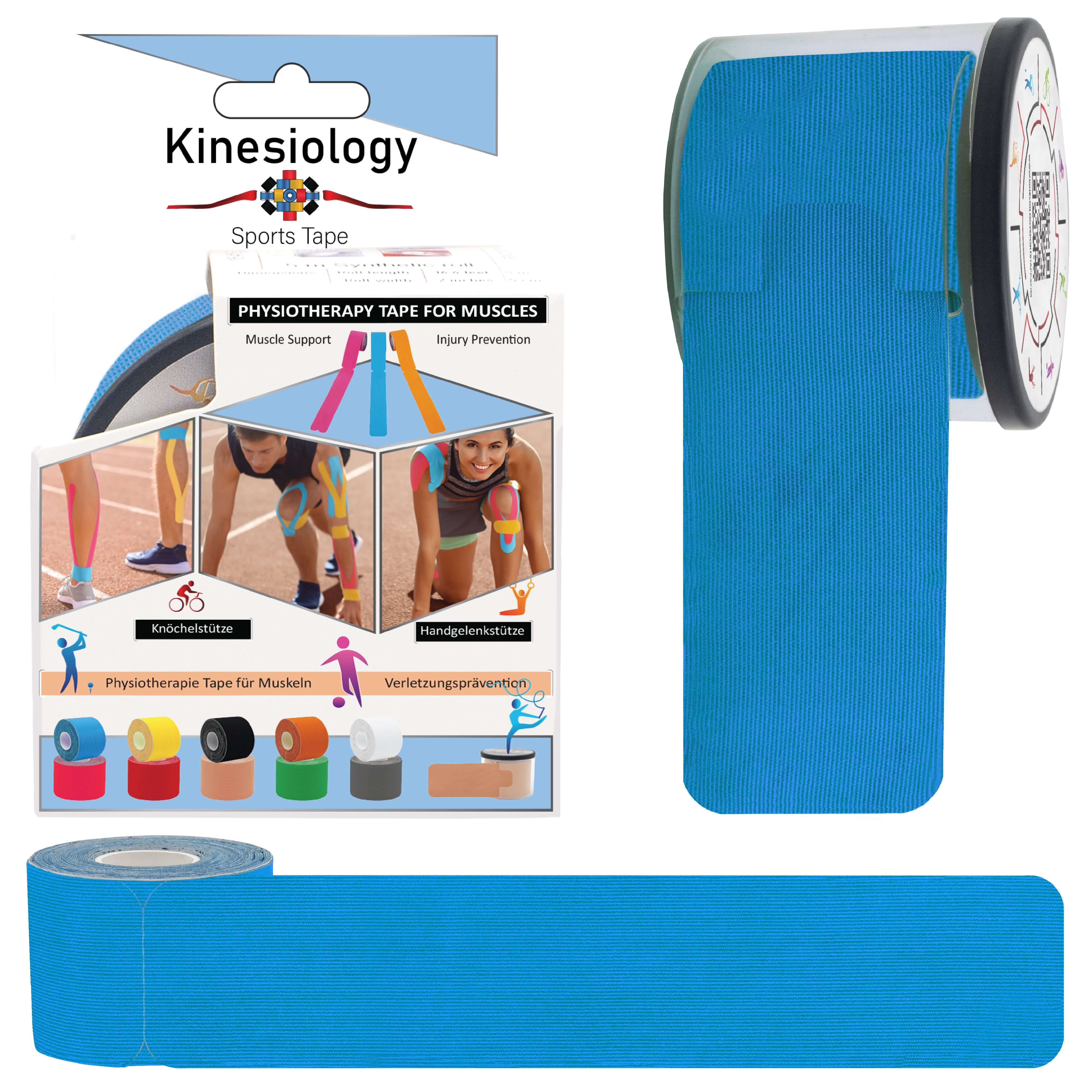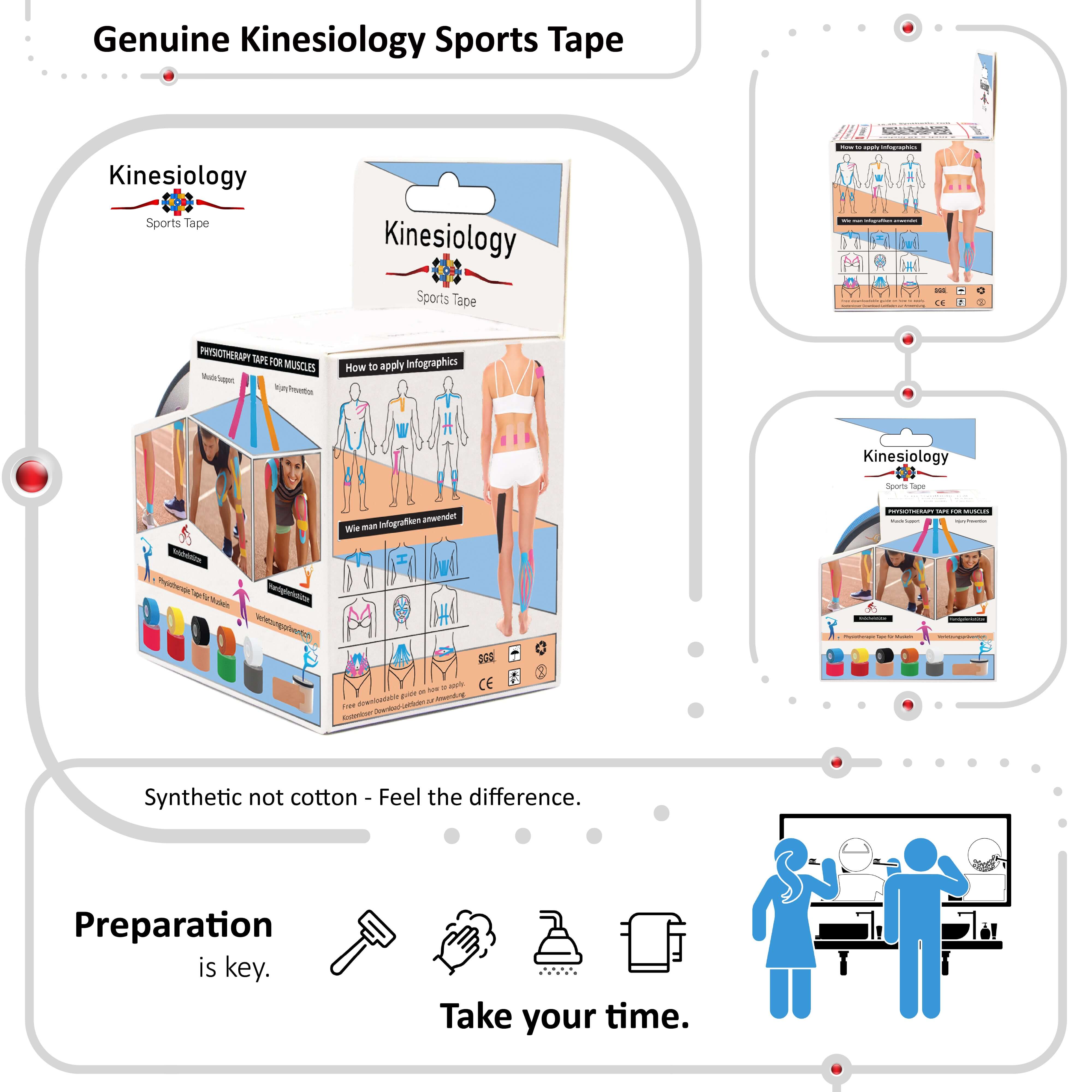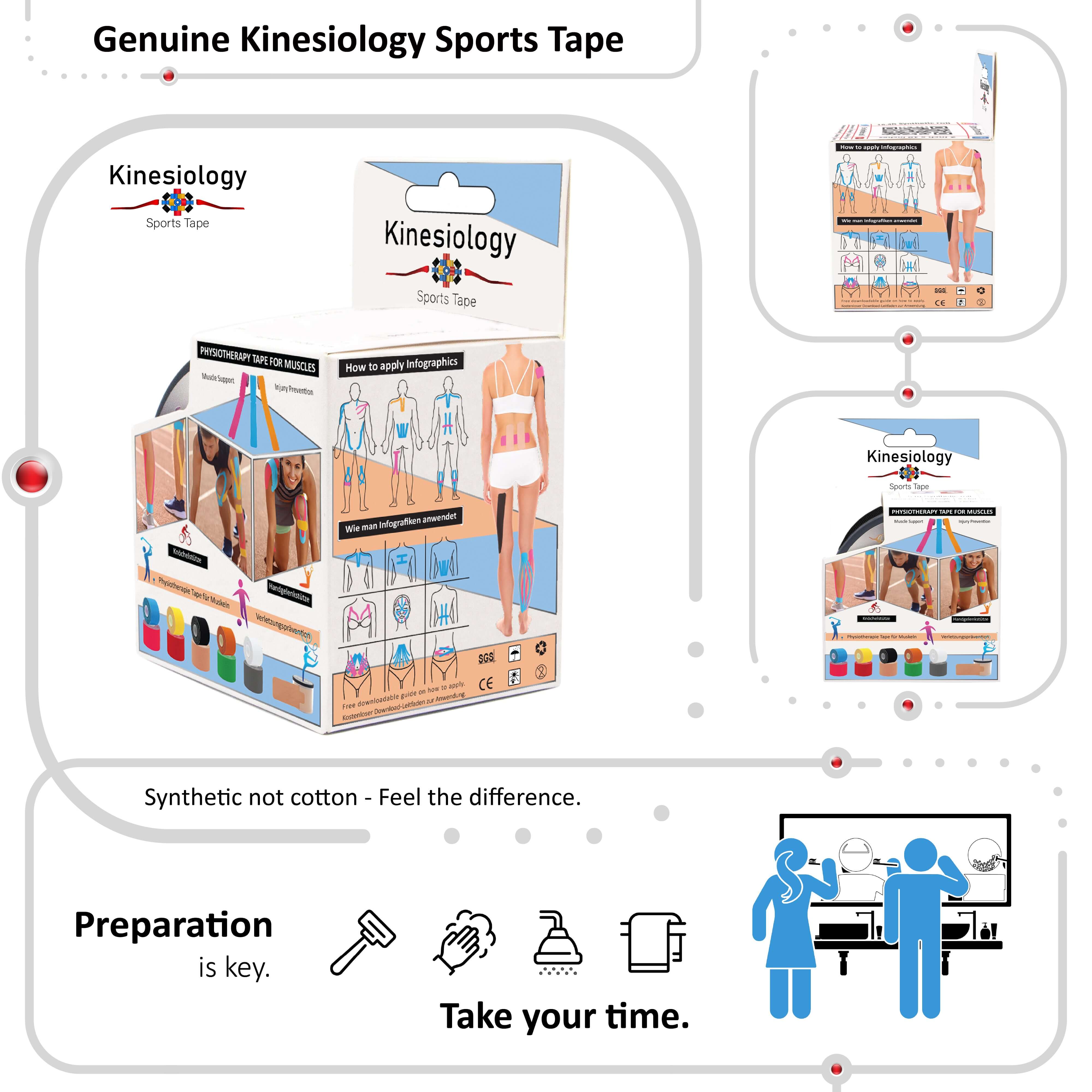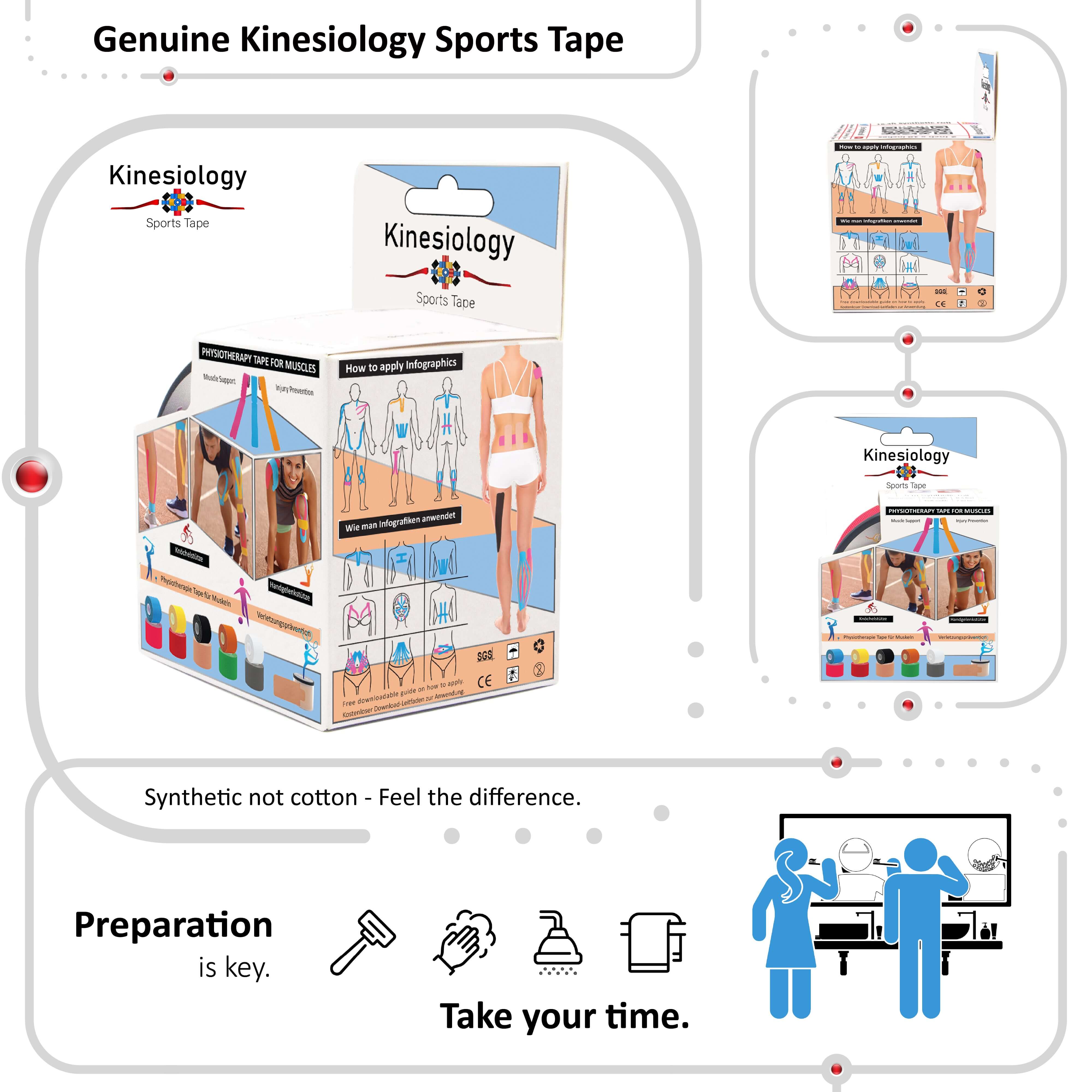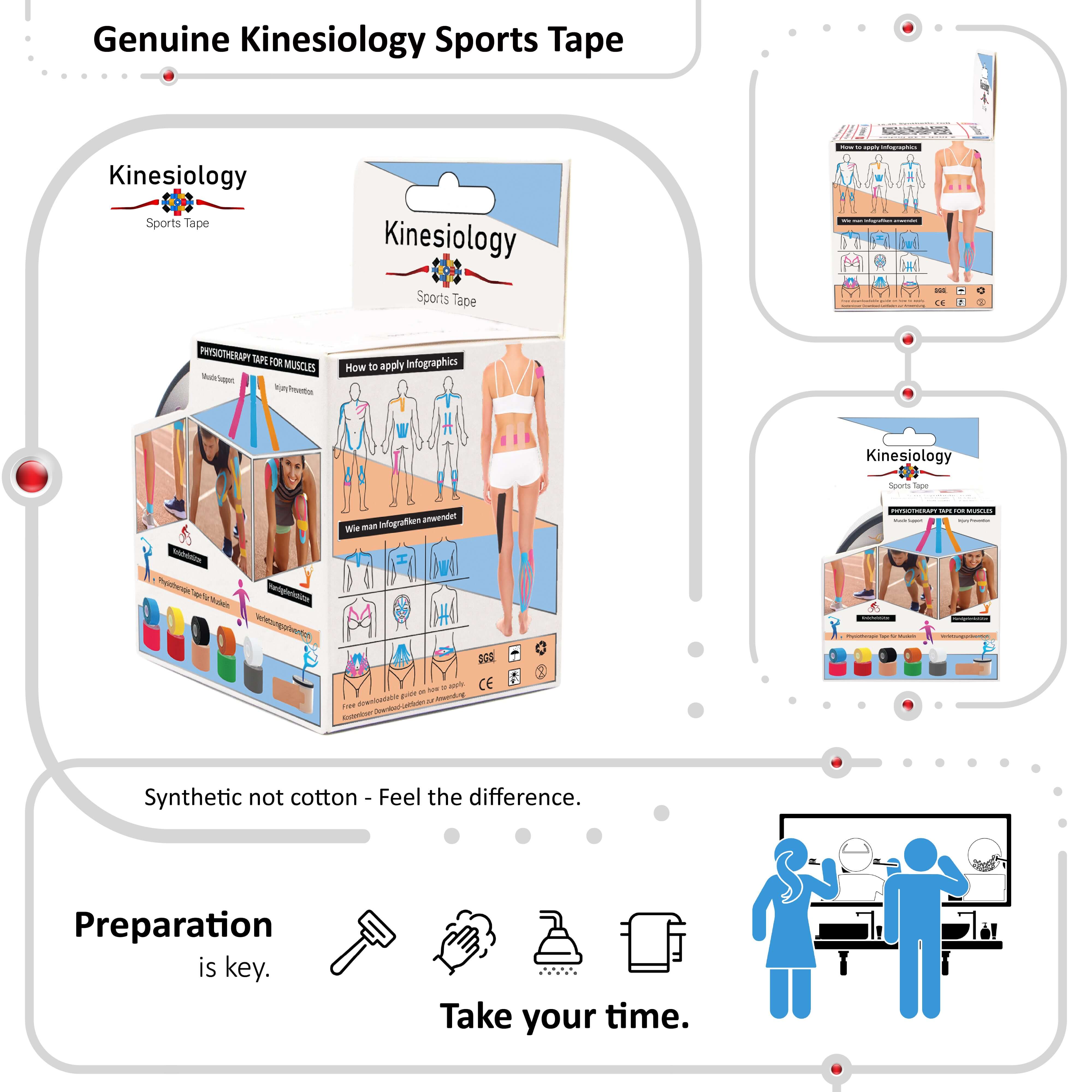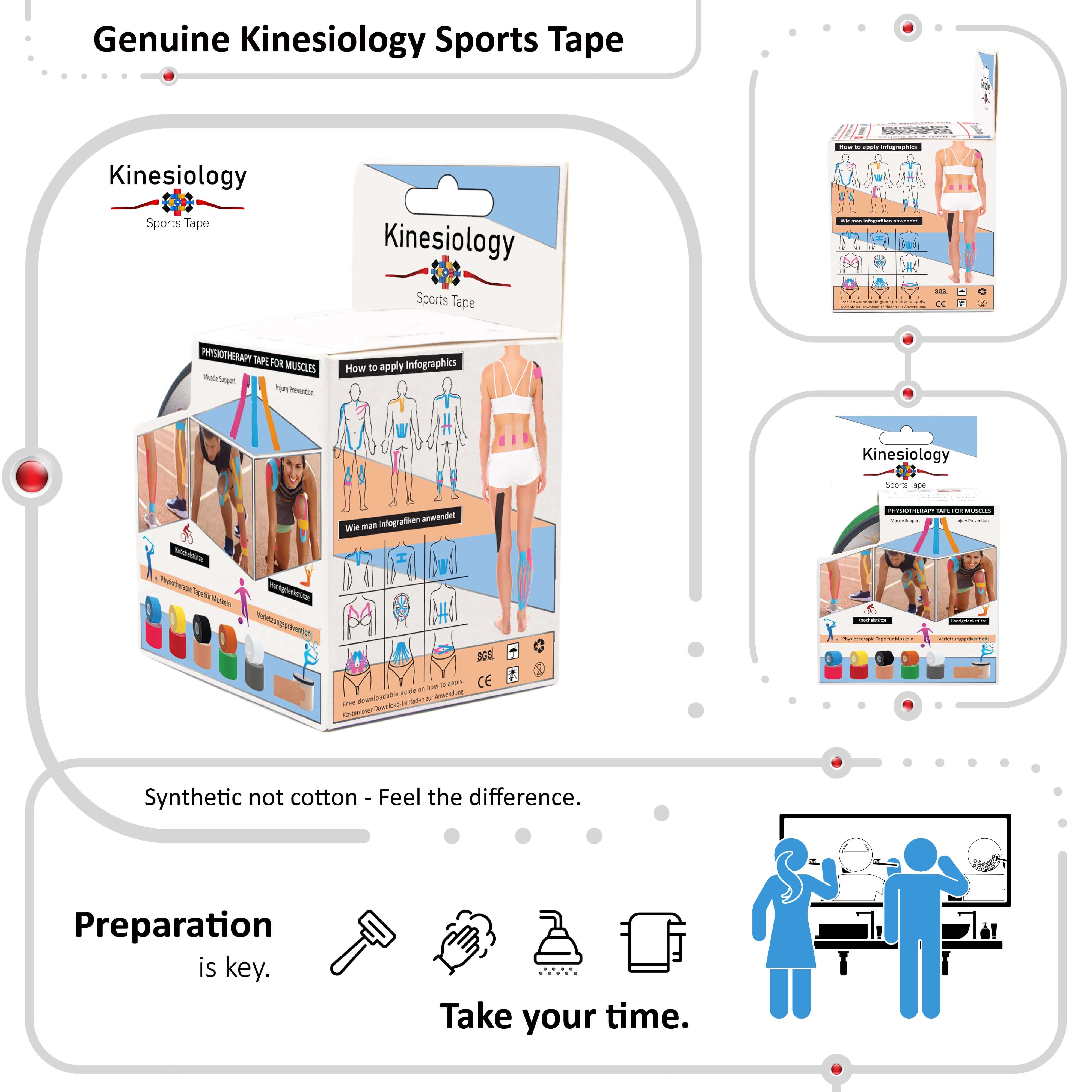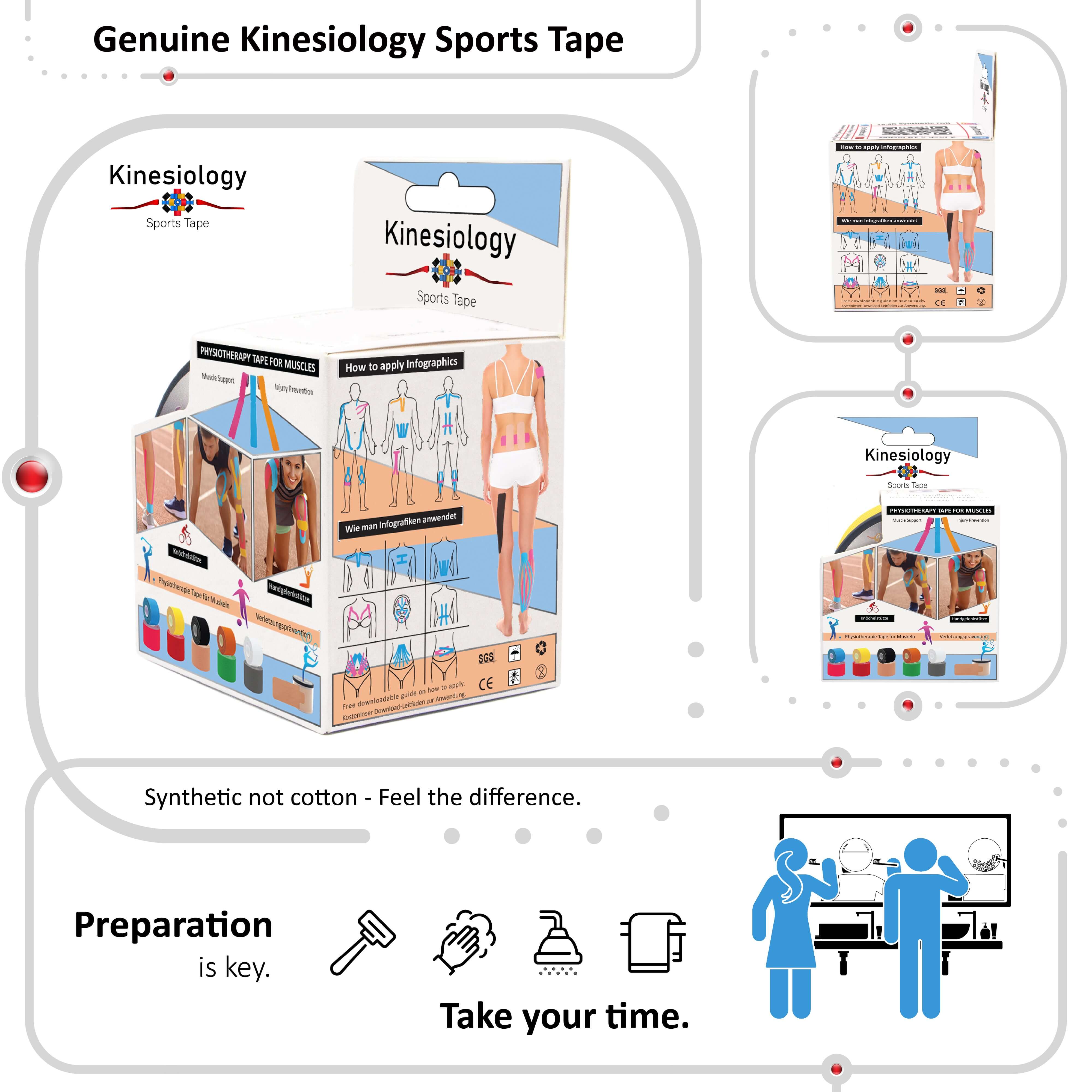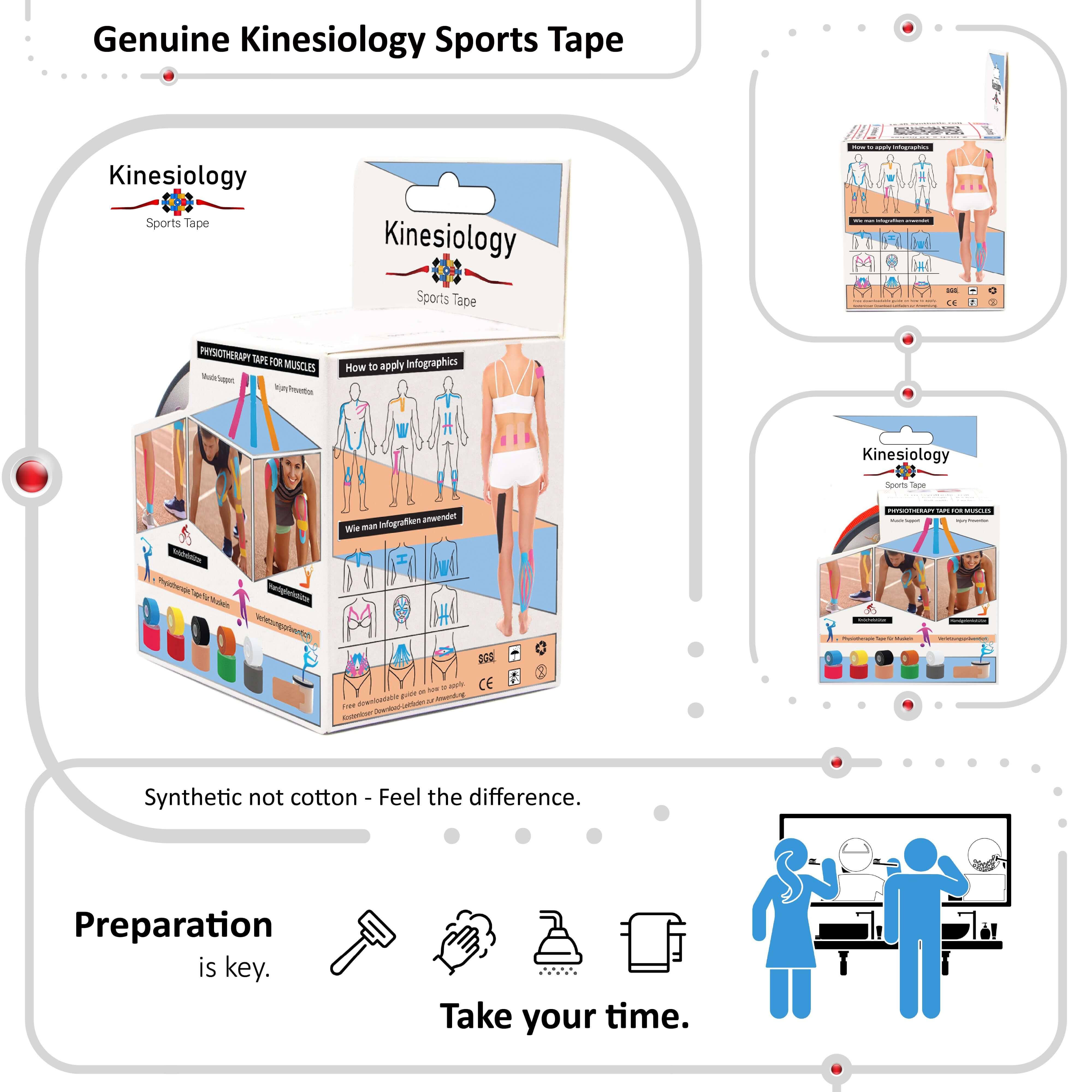
Kinesiology Tape for Back Pain and Lower Back Support: Complete Therapeutic Guide

Lower back pain affects approximately 80% of adults at some point in their lives, making it one of the most common and costly health problems worldwide [1]. The complex anatomy of the lumbar spine, combined with the significant mechanical stresses it experiences during daily activities, makes the lower back particularly susceptible to injury and dysfunction. Traditional treatment approaches often involve rest, medication, or restrictive bracing, but kinesiology tape offers a revolutionary alternative that provides therapeutic support while maintaining the mobility essential for normal spine function and daily activities.
The lumbar spine must balance the competing demands of stability and mobility, supporting the weight of the upper body while allowing for complex movements in multiple planes [2]. This delicate balance makes the lower back vulnerable to various conditions, from acute muscle strains to chronic degenerative changes. Kinesiology tape's unique properties make it ideally suited for back applications, as it can provide support and pain relief while allowing the full range of motion necessary for normal spinal function.
Research has consistently demonstrated the effectiveness of kinesiology tape for various back conditions, with studies showing significant improvements in pain levels, functional capacity, and quality of life [3]. The tape's ability to enhance proprioception, improve muscle activation patterns, and reduce pain makes it particularly valuable for both acute and chronic lower back conditions. Unlike rigid bracing that restricts movement, kinesiology tape works with the spine's natural biomechanics to promote healing while maintaining function.
The multifaceted nature of lower back pain requires comprehensive treatment approaches that address not only the symptoms but also the underlying causes of dysfunction. Kinesiology tape can play a crucial role in this comprehensive approach by providing immediate pain relief while supporting the healing process and facilitating the restoration of normal movement patterns [4]. This makes it an invaluable tool for individuals dealing with various types of back pain, from acute injuries to chronic conditions.
This comprehensive guide explores the science behind kinesiology tape's effectiveness for back pain, provides detailed application techniques for various spinal conditions, and offers evidence-based strategies for maximizing therapeutic outcomes. Whether you're dealing with acute injury, chronic pain, or post-surgical recovery, understanding how to properly apply and utilize kinesiology tape can be a valuable component of your back pain management strategy.
Understanding Lower Back Anatomy and Common Pain Patterns
The lumbar spine consists of five vertebrae (L1-L5) that form the lower portion of the spinal column and serve as the foundation for upper body support and movement [5]. Each vertebra is separated by intervertebral discs that act as shock absorbers and allow for spinal movement. The complex network of muscles, ligaments, and fascia surrounding the lumbar spine provides both stability and mobility, making this region particularly susceptible to injury when these structures become imbalanced or overloaded.
The erector spinae muscles, consisting of the iliocostalis, longissimus, and spinalis, run along the length of the spine and provide primary extension and lateral flexion movements [6]. The multifidus muscles, located deep within the spine, provide segmental stability and are crucial for maintaining proper spinal alignment during movement. The quadratus lumborum connects the lower ribs to the pelvis and assists with lateral flexion and spinal stabilization.
The core muscle system, including the diaphragm, pelvic floor muscles, transverse abdominis, and multifidus, works together to provide spinal stability and support [7]. Dysfunction in any component of this system can lead to increased stress on passive structures like ligaments and discs, potentially resulting in pain and injury. Understanding these relationships is crucial for effective kinesiology tape application.
Common lower back pain patterns often reflect dysfunction in specific anatomical structures. Central lower back pain may indicate disc problems, facet joint dysfunction, or muscle strain in the erector spinae [8]. Unilateral pain may suggest muscle imbalances, sacroiliac joint dysfunction, or nerve irritation. Pain that radiates into the buttocks or legs may indicate nerve involvement or referred pain from various spinal structures.
Acute lower back pain typically results from sudden movements, lifting injuries, or muscle strains, while chronic pain often develops gradually through repetitive stress, poor posture, or degenerative changes [9]. The pain patterns and underlying pathophysiology differ between acute and chronic conditions, requiring different approaches to kinesiology tape application and overall treatment strategies.
The Science Behind Kinesiology Tape's Effectiveness for Back Pain
The therapeutic effects of kinesiology tape on back pain operate through multiple physiological mechanisms that work synergistically to reduce pain, improve function, and promote healing [10]. Understanding these mechanisms helps explain why kinesiology tape can be so effective for back conditions and guides proper application techniques.
Neurological effects represent one of the most significant ways kinesiology tape benefits back pain. The tape stimulates cutaneous mechanoreceptors in the skin, providing enhanced sensory input to the central nervous system [11]. This increased sensory feedback can improve motor control and muscle activation patterns, which are often disrupted in individuals with back pain. The gate control theory of pain explains how this sensory input can inhibit pain signals at the spinal cord level, providing immediate pain relief.
Muscle facilitation and inhibition effects are particularly relevant for back conditions where muscle imbalances are common. Kinesiology tape can be applied to facilitate weak or inhibited muscles while potentially reducing overactivity in tense or spastic muscles [12]. This is especially important for the deep stabilizing muscles like the multifidus, which often become inhibited following back injury or in the presence of pain.
The mechanical support provided by kinesiology tape differs from rigid bracing by offering dynamic support that assists muscle function while allowing full range of motion [13]. This support can help correct faulty movement patterns, reduce stress on injured structures, and provide confidence for individuals returning to activity after injury. The tape's elastic properties allow it to provide consistent support throughout various spinal movements.
Circulatory benefits play an important role in back pain management and healing. The lifting effect created by kinesiology tape increases the space between skin and underlying tissues, promoting better circulation of blood and lymphatic fluids [14]. This improved circulation helps reduce inflammation, accelerate the removal of metabolic waste products, and enhance the delivery of nutrients and oxygen to healing tissues.
Proprioceptive enhancement is crucial for spinal health, as the spine relies heavily on neuromuscular control for stability and protection [15]. Kinesiology tape application can significantly improve proprioceptive awareness, helping individuals better sense their spinal position and movement. This enhanced proprioception can lead to improved movement patterns, better postural awareness, and reduced risk of re-injury.
Essential Application Techniques for Lower Back Pain
Mastering fundamental application techniques for back taping is essential for achieving optimal therapeutic outcomes [16]. The spine's complex anatomy and extensive range of motion require specific approaches that address both local and global aspects of spinal function.
Preparation for back taping begins with proper positioning and assessment of the individual's specific pain patterns and movement limitations [17]. The person should be positioned comfortably, typically standing or lying prone, with access to the entire back region. Skin preparation is crucial due to the potential for clothing friction and the need for secure adhesion during spinal movements.
The basic I-strip technique forms the foundation for most back taping applications. For erector spinae support, I-strips are typically applied parallel to the spine, running from the lower ribs to the sacrum [18]. The tape should be applied with the spine in slight flexion to ensure appropriate tension during extension movements. Multiple strips may be necessary to provide comprehensive support along the length of the lumbar spine.
The star pattern technique is particularly effective for localized areas of pain or muscle spasm. This application involves placing multiple strips in a radiating pattern over the painful area, with each strip providing support in different directions [19]. The intersection point should be positioned over the area requiring the most support, with each arm of the star providing multidirectional stability.
For comprehensive lower back support, the H-pattern technique provides excellent stability and support. This application involves placing vertical strips along the erector spinae muscles and connecting them with horizontal strips across the lower back [20]. This pattern provides support for both extension and lateral flexion movements while maintaining spinal mobility.
Tension application for back taping typically ranges from 25-50% of the tape's maximum stretch, depending on the specific goals and individual tolerance [21]. Higher tensions may be appropriate for providing mechanical support during activities, while lower tensions may be better for pain relief and muscle facilitation. The key is to apply enough tension to achieve the desired therapeutic effect without restricting normal spinal movement.
Specific Protocols for Common Back Conditions
Different back conditions require specific taping approaches to address their unique pathophysiology and biomechanical issues [22]. Understanding these condition-specific protocols ensures that kinesiology tape is applied most effectively for each individual's needs.
Acute lower back strain requires gentle taping approaches that focus on pain relief and muscle relaxation. These applications typically use lower tensions and may incorporate techniques that promote muscle relaxation and reduce protective muscle guarding [23]. The primary goals are to provide comfort and support while allowing the acute inflammatory process to resolve naturally.
For acute strains, gentle I-strip applications along the affected muscles with 15-25% tension may be most appropriate. The tape should be applied to provide support during movement while promoting circulation and reducing muscle tension [24]. Fan cuts may be incorporated to enhance lymphatic drainage and reduce inflammation in the affected area.
Chronic lower back pain often requires more comprehensive taping approaches that address muscle imbalances, movement dysfunctions, and postural issues [25]. These applications may use higher tensions and more complex patterns to help break the cycle of dysfunction and promote tissue remodeling. The focus shifts from acute pain management to functional restoration and movement pattern correction.
For chronic conditions, comprehensive support patterns that address multiple aspects of spinal function may be most effective. This might include combinations of erector spinae support, core muscle facilitation, and postural correction techniques [26]. The tape should be applied to provide consistent support throughout daily activities while encouraging proper spinal mechanics.
Disc-related pain requires careful consideration of the specific movements and positions that aggravate symptoms. Taping applications should focus on supporting the spine in neutral alignment while avoiding positions or movements that increase intradiscal pressure [27]. The tape may be applied to encourage proper spinal posture and discourage harmful movement patterns.
Facet joint dysfunction may benefit from taping applications that provide support during extension and rotation movements, which commonly aggravate facet joint pain [28]. The tape should be positioned to support the posterior elements of the spine while allowing controlled movement within pain-free ranges.
Sacroiliac joint dysfunction requires specific taping techniques that address the unique biomechanics of this joint. Applications may include techniques that provide stability to the sacroiliac joint while supporting the surrounding musculature [29]. The tape should be positioned to reduce stress on the joint while promoting proper pelvic alignment.
Advanced Techniques and Postural Correction
Advanced taping techniques can provide enhanced therapeutic benefits for complex or persistent back problems [30]. These applications often involve multiple strips of tape working together to address various aspects of spinal dysfunction simultaneously.
Postural correction taping focuses on addressing the postural deviations that commonly contribute to back pain. Forward head posture, increased thoracic kyphosis, and anterior pelvic tilt are common postural issues that can alter spinal mechanics and contribute to lower back pain [31]. Taping applications can be designed to encourage better posture by facilitating postural muscles and providing proprioceptive feedback about spinal position.
Core muscle facilitation techniques use kinesiology tape to enhance activation of the deep stabilizing muscles that are crucial for spinal health [32]. These applications may target the transverse abdominis, multifidus, or other core muscles that often become inhibited in individuals with back pain. The tape should be applied to encourage proper muscle activation patterns during functional activities.
Movement pattern correction taping addresses specific movement dysfunctions that contribute to back pain. This might involve applications that encourage proper hip hinge patterns during bending, promote appropriate spinal curves during lifting, or facilitate proper core activation during rotational movements [33]. The tape provides continuous feedback that helps reinforce proper movement patterns.
Kinetic chain integration approaches recognize that back function is intimately connected to the function of the entire body. These applications may include taping of the hip muscles, thoracic spine, or even lower extremities to address contributing factors that may be perpetuating the back pain [34]. This comprehensive approach can be particularly valuable for individuals whose back pain is related to dysfunction in other parts of the kinetic chain.
Integration with Comprehensive Back Pain Management
While kinesiology tape can be highly effective for back pain, it's most beneficial when integrated into a comprehensive treatment approach that addresses all aspects of spinal health and function [35].
Exercise therapy remains the cornerstone of back pain management, and kinesiology tape can enhance the effectiveness of exercise interventions. Tape can be applied before exercise sessions to improve muscle activation patterns, provide support during movement, and reduce pain that might otherwise limit exercise participation [36]. The tape can help individuals maintain proper form during exercises while building strength and endurance.
Manual therapy techniques can be effectively combined with kinesiology tape applications. The tape can help maintain the benefits of manual therapy between treatment sessions while providing ongoing support for improved movement patterns [37]. This combination approach can be particularly effective for addressing both structural and functional aspects of back pain.
Ergonomic modifications and lifestyle changes are crucial components of comprehensive back pain management. Kinesiology tape can provide support during the transition period while new movement habits and workplace modifications are being implemented [38]. The tape serves as a reminder and support system while healthier patterns are being established.
Education about proper body mechanics and pain management strategies is essential for long-term success. Individuals should understand how their daily activities and movement patterns contribute to back pain and learn strategies for preventing future episodes [39]. Kinesiology tape can serve as a tool for reinforcing proper movement patterns while these new habits are being developed.
Monitoring Progress and Optimizing Outcomes
Effective use of kinesiology tape for back pain requires systematic monitoring of progress and continuous optimization of treatment approaches [40]. Pain monitoring using standardized scales helps track improvements objectively, while functional assessments provide insights into real-world effectiveness.
Range of motion measurements help determine whether kinesiology tape is maintaining or improving spinal mobility. Regular assessment ensures that the tape is providing support without creating unwanted restrictions [41]. Functional tests like forward bending, side bending, and rotation can be used to assess improvements in movement quality and pain levels.
Activity tolerance monitoring helps determine whether individuals can return to their desired activities safely and effectively. Gradual progression of activity levels while monitoring symptoms ensures that the tape is providing adequate support for increasing demands [42]. This is particularly important for individuals with physically demanding occupations or athletic pursuits.
Sleep quality assessment can be important for back pain, as spinal discomfort often interferes with sleep quality and positioning. Improvements in sleep can indicate that kinesiology tape is effectively managing pain and supporting healing [43]. Sleep diaries or simple questionnaires can provide valuable information about treatment effectiveness.
Conclusion: Maximizing Back Health Through Strategic Kinesiology Tape Use
Kinesiology tape represents a valuable tool in the comprehensive management of back pain, offering a unique combination of support, pain relief, and functional enhancement that can significantly improve quality of life for individuals with various spinal conditions [44]. The key to success lies in understanding the complex anatomy and biomechanics of the spine, conducting thorough assessments to guide treatment decisions, and implementing evidence-based application techniques.
The versatility of kinesiology tape makes it suitable for a wide range of back conditions, from acute injuries to chronic degenerative conditions. Its ability to provide therapeutic benefits while maintaining spinal mobility makes it particularly valuable for individuals who need to remain active while managing their condition [45]. However, success requires proper application techniques, appropriate monitoring, and integration with other therapeutic interventions.
For individuals considering kinesiology tape for back pain, it's important to approach its use systematically and with realistic expectations. While tape can provide significant benefits, it works best when combined with appropriate exercise, lifestyle modifications, and professional guidance [46]. With proper application and integration into a comprehensive treatment approach, kinesiology tape can be a powerful tool for achieving better spinal health and improved function.
References
[1] https://www.kttape.com/blogs/how-to-apply/middle-back [2] https://pmc.ncbi.nlm.nih.gov/articles/PMC6657767/ [3] https://kinesiotape.com/kinesio-pre-cut-back/ [4] https://thejupiterchiropractor.com/blog/how-to-kinesio-tape-for-lower-back-pain [5] https://www.performancehealthacademy.com/star-pattern-kinesiology-taping-technique-for-lumbar-pain.html [6] https://www.healthcentral.com/condition/back-pain/can-you-kt-tape-your-back-pain-away [7] https://www.kttape.com/pages/back [8] https://pubmed.ncbi.nlm.nih.gov/27634093/ [9] https://www.hss.edu/health-library/move-better/kinesiology-tape [10] https://www.performancehealth.com/articles/kinesiology-tape-101-everything-you-need-to-know [11] https://www.verywellhealth.com/kinesiology-tape-in-physical-therapy-2696435 [12] https://oaidocs.com/2018/09/14/benefits-of-kinesiology-tape/ [13] https://www.healthline.com/health/kinesiology-tape [14] https://therapypartnersgroup.com/7-conditions-that-kinesio-tape-can-benefit-from/ [15] https://tapegeeks.com/blogs/news/benefits-of-kinesiology-tape [16] https://www.premierhealth.com/your-health/articles/women-wisdom-wellness-/how-tape-heals-the-secret-behind-kinesiology-tape [17] https://coastalorthopedics.com/blog/benefits-of-kinesio-tape/ [18] https://pmc.ncbi.nlm.nih.gov/articles/PMC7349891/ [19] https://www.kttape.com/pages/how-to-apply-kt-tape [20] https://www.healthandcare.co.uk/blog/ultimate-guide-how-to-apply-kinesiology-tape.html [21] https://www.performancehealthacademy.com/how-to-use-kinesiology-tape-to-reduce-swelling.html [22] https://www.physio-pedia.com/Knee_Taping [23] https://www.thysol.us/how-to-tape/knee-pain/ [24] https://sporttape.co.uk/blogs/news/can-kinesiology-tape-relieve-knee-pain [25] https://www.tsaog.com/blog/2024/10/21/how-to-tape-a-knee-for-stability-and-pain/ [26] https://www.healthline.com/health/how-to-tape-a-knee [27] https://www.kttape.com/pages/knee-pain [28] https://www.kttape.com/blogs/how-to-apply/full-knee-support [29] https://www.kttape.com/blogs/how-to-apply/ankle-stability [30] https://www.thysol.us/how-to-tape/ankle-stability/ [31] https://www.nike.com/a/how-to-tape-an-ankle [32] https://www.performancehealthacademy.com/ankle-sprain-kinesiology-taping-technique-tapetuesday.html [33] https://pmc.ncbi.nlm.nih.gov/articles/PMC4851123/ [34] https://www.healthline.com/health/how-to-tape-an-ankle [35] https://www.kttape.com/blogs/how-to-apply/general-shoulder [36] https://www.thysol.us/how-to-tape/shoulder-pain-instability/ [37] https://kinesiotape.com/kinesio-pre-cut-shoulder/ [38] https://www.verywellhealth.com/support-your-shoulder-with-kinesiology-tape-2696040 [39] https://sporttape.co.uk/pages/kinesiology-taping-shoulder [40] https://kinesiologysportstape.com/en-us/pages/shoulder-pain [41] https://pubmed.ncbi.nlm.nih.gov/38243921/ [42] https://www.mdpi.com/2075-1729/14/2/249 [43] https://heelthatpain.com/treatments/kinesiology-tape/ [44] https://www.verywellhealth.com/treat-your-plantar-fasciitis-with-kinesiology-tape-2696033 [45] https://bracelab.com/clinicians-classroom/which-tape-is-best-for-treating-plantar-fasciitis [46] https://www.performancehealthacademy.com/plantar-
